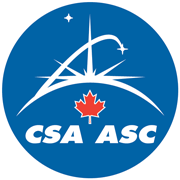FD-03: Thermal Hyperspectral Imaging: from basics to ground-based and airborne applications
Marc-André Gagnon, Pierre Tremblay
Abstract:
This tutorial presents the basic notions of radiometry and infrared spectroscopy related to thermal infrared hyperspectral imaging (HSI). In order to assess the usefulness of this technique among other existing solutions, thermal infrared (TIR) hyperspectral remote sensing is compared with the more common near-infrared (NIR) and short-wave infrared (SWIR) approaches. A review of the existing instrumentations (detectors, optics, modulators) used for thermal infrared hyperspectral imaging is presented, along with their benefits and weaknesses.
Due to the inherent self-emission associated with thermal infrared, data analysis from thermal HSI has to be carried out in a different way than the reflective data obtained from NIR and SWIR. Therefore, the concepts and the basic radiative transfer models associated with standoff gas imaging analysis will be presented in the aim of understanding and correcting the atmospheric contributions.
Both self-emission and reflection phenomena take place in thermal HSI experiments involving solid materials and minerals. Therefore, the use of temperature-emissivity separation algorithms is required for proper data analysis in order to estimate the spectral emissivity of the surface. Different strategies are discussed as well as their limitations.
The different challenges encountered in ground and airborne thermal infrared hyperspectral experiments are also discussed. The presentation focuses on the phenomenology associated with selected applications and the emphasis is put on how to adopt the optimal data analysis scheme in order to address specific experimental conditions.
Biography:
Marc-André Gagnon joined Telops in 2011 as an application scientist for its hyper-vision systems. Since 2012, he holds the position of Hyper-Cam product line manager. Dr. Gagnon obtained his B.Sc. degree in chemistry from Université de Sherbrooke in 2002 and his Ph.D. in spectroscopy from Université de Montréal in 2009. Dr. Gagnon also previously worked in hydrometallurgy,pharmaceutical R&D and environmental chemistry.
Pierre Tremblay is senior physics engineer at Telops in Québec City, Canada, since 2013. Previously he was professor at the Centre d'optique, phortonique et lasers(COPL), Université Laval also in Québec City. During his career Dr. Tremblay gained experience in stimulating industrial environments developing instrumentation: Bomem Hartmann & Braun Inc. in 1995, and Telops in 2002, 2009, 2011 and 2012. Dr.Professor Tremblay's research interests now range from the understanding and modeling of Fourier-transform spectrometers, of their own signatures impacting the spectral radiance measurements, and the development of better instruments, as well as that of novel algorithms to improve their performances. More recently, with the advent of powerful imaging Fourier-transform spectrometers, he got involved in a whole new field of interests and applications, due to the intrinsic coupling between imaging and spectral capabilities of such instruments. Among other topics, he is now studying identification and quantification of distant and turbulent gaseous emissions.

